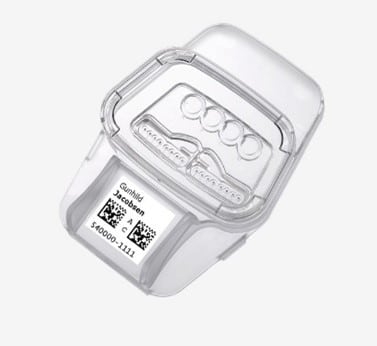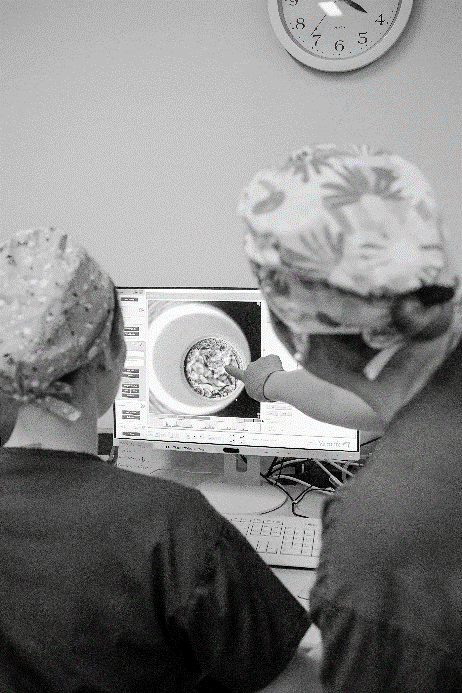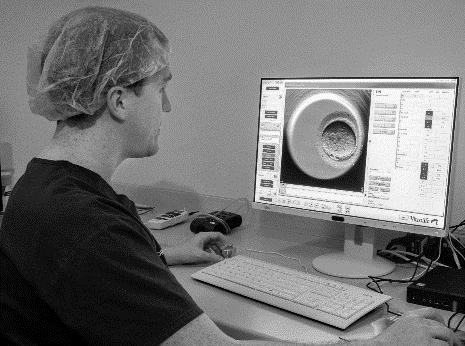Resources
Time-lapse Culture

Looks Can Be Deceiving
The technology surrounding IVF is continuously advancing. In the not-so-distant past, to check the progress of a patient’s embryos, an Embryologist would have to remove a culture dish from a dark incubator, place it on a microscope stage for evaluation and return it safely to that incubator as quickly as possible.
Extended time outside culture has been shown to reduce the quality of an embryo, so usually these checks are limited to once per day. However, doing so provides only a brief snapshot of the embryo’s appearance and being so brief, it is not unusual for events and structures within the embryo to go undetected. For example, there may appear to be an 8-cell embryo before you, but looks can be deceiving: what looks to be a cell may actually be a fragment. These small pieces of cellular material within the embryo can be easily mistaken for a cell when the embryo is only briefly assessed.
Such brief snapshots do not allow the Embryologist to identify abnormalities in the rate or pattern of cell division, which can be common in the early stages of embryo development. Instead of one cell splitting into 2 daughter cells, a single cell may divide from 1 cell to 3+ cells; this is called direct cleavage. Such observations can give our Scientists a great deal of insight into the implantation potential of the embryos – you can learn more about our extensive research in this area here.

Improved Culture
Time-lapse culture offers an undisturbed environment and improved embryo evaluation by enabling real-time assessment of embryos, without the need to remove them from culture. Fertility North utilises an EmbryoScope+®, which is a time-lapse incubator with a built-in microscope with the capacity to take multiple images of each embryo every 10 minutes, giving us a three-dimensional video of each embryo’s time in culture.
Embryos are placed in a specialised culture dish, each having the capacity to hold up to 16 embryos in an individual “well”. Once prepared, each dish will contain a highly specialised medium designed to support optimal embryo growth and once placed into this dish, the embryos do not need to leave the incubator until it is time to use them for treatment – transfer into the uterus, embryo biopsy or freezing.
Embryo Assessment
By compiling the thousands of images that have been taken of each embryo, a three-dimensional video is created for each embryo, detailing its progress in culture in ten-minutes intervals. When you consider the embryo may be in culture for up to seven days, that equates to over 11000 images or snapshots of each embryo! When compared with the once or maybe twice-a-day assessments undertaken in conventional culture systems (7 – 14 snapshots), it is easy to appreciate just how much more information time-lapse culture offers.
By closely examining these videos, our Embryologists are able to analyse the rate and pattern of cell division to identify abnormalities that would not have been seen during conventional embryo culture. Our team can then apply a defined algorithm, which has been developed by examining the outcomes of tens of thousands of embryos, to help identify the embryo with the highest potential for implantation to transfer, as well as identify those suitable for freezing for future use.

Fertility North undertakes assessment of embryos at two different milestones – 3 days post-insemination and 5/6 days post-insemination. On day 3 an embryo should have reached the 8 cell stage. It will go through at least three cycles of cell division following a 1-2-4-8 pattern of cell division. Any difference in cell numbers and/or the rate and pattern of division can be indicative of reduced potential for blastocyst formation and implantation.
When an embryo reaches day 5/6, it should be comprised of hundreds of cells and a fluid-filled cavity will have formed within the centre of the embryo. Within the embryo, now called a blastocyst, two distinct cell types should be visible – an inner cell mass which will go on to form the foetus, and the trophectoderm cells that form the placenta. On average, around 40-50% of embryos reach the blastocyst stage, however this percentage varies in accordance with age and cause of infertility, amongst many other factors.

Clinical Benefits
As a blastocyst continues developing, a phenomena known as spontaneous collapse (SC) can occur, whereby the embryo contracts or shrinks significantly in size and may only be visualised with time-lapse technology. Our research has shown there to be a correlation between SC and lower pregnancy rates. So, by prioritising blastocysts without SC for transfer, we are again better able to select the embryos most likely to offer treatment success.
While unfortunately, time-lapse incubation cannot improve the quality of the embryos being cultured within, by ensuring that the embryos’ remain safely confined within their culture environment while at the same time, allowing continuous assessment of their progress and development, time-lapse incubation offers Embryologists a far superior amount of information about your embryos, which in turn translates into improved embryo selection.
Introduced into routine clinical use at Fertility North in 2013, the vast majority of patients undertaking treatment at Fertility North will experience the benefits of time-lapse culture at no additional charge. You can learn more about its use here, or alternatively, please do not hesitate to get in touch.




